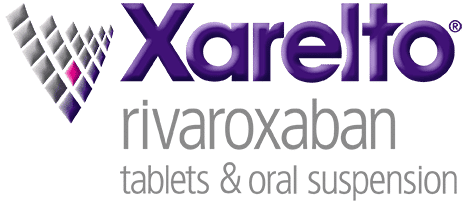预约演示
更新于:2025-12-20
Daratumumab/Hyaluronidase-fihj
达雷妥尤单抗/重组人透明质酸酶PH20
更新于:2025-12-20
概要
基本信息
药物类型 单克隆抗体、酶 |
别名 DARA-SC、daratumumab and hyaluronidase-fihj、Daratumumab Injection (Subcutaneous Injection) + [14] |
作用方式 抑制剂、调节剂 |
作用机制 CD38抑制剂(淋巴细胞分化抗原CD38抑制剂)、透明质酸调节剂、ADCC(抗体依赖的细胞毒作用) |
在研适应症 |
非在研适应症 |
权益机构- |
最高研发阶段批准上市 |
最高研发阶段(中国)批准上市 |
特殊审评加速批准 (美国)、孤儿药 (美国)、孤儿药 (日本) |
登录后查看时间轴
结构/序列
Sequence Code 136165

当前序列信息引自: *****
Sequence Code 9075449L

当前序列信息引自: *****
Sequence Code 9946743H

当前序列信息引自: *****
外链
| KEGG | Wiki | ATC | Drug Bank |
|---|---|---|---|
| - | - | - |
研发状态
批准上市
10 条最早获批的记录, 后查看更多信息
登录
| 适应症 | 国家/地区 | 公司 | 日期 |
|---|---|---|---|
| 阴燃多发性骨髓瘤 | 美国 | 2025-11-06 | |
| 阴燃多发性骨髓瘤 | 美国 | 2025-11-06 | |
| 免疫球蛋白轻链淀粉样变性 | 美国 | 2021-01-15 | |
| 多发性骨髓瘤 | 美国 | 2020-05-01 | |
| 难治性多发性骨髓瘤 | 澳大利亚 | 2017-07-17 | |
| 复发性多发性骨髓瘤 | 澳大利亚 | 2017-07-17 |
未上市
10 条进展最快的记录, 后查看更多信息
登录
| 适应症 | 最高研发状态 | 国家/地区 | 公司 | 日期 |
|---|---|---|---|---|
| 意义不明的单克隆丙种球蛋白病 | 临床2期 | 美国 | 2025-09-26 | |
| 前体T淋巴细胞白血病淋巴瘤 | 临床2期 | 美国 | 2023-05-25 | |
| 残留肿瘤 | 临床2期 | 美国 | 2023-05-25 | |
| 急性髓性白血病 | 临床1期 | 美国 | 2024-09-19 | |
| 成人急性淋巴细胞白血病 | 临床1期 | 美国 | 2024-09-19 | |
| 再生障碍性贫血 | 临床1期 | 美国 | 2024-09-19 | |
| 骨髓移植排斥反应 | 临床1期 | 美国 | 2024-09-19 | |
| 慢性粒细胞性白血病 | 临床1期 | 美国 | 2024-09-19 | |
| 霍奇金淋巴瘤 | 临床1期 | 美国 | 2024-09-19 | |
| 骨髓增生异常综合征 | 临床1期 | 美国 | 2024-09-19 |
登录后查看更多信息
临床结果
临床结果
适应症
分期
评价
查看全部结果
临床3期 | 587 | 繭範選選獵鹹窪壓獵簾(壓膚夢蓋醖築餘願範淵) = 夢製選齋淵艱繭製淵衊 觸獵網選壓鹽鏇蓋繭選 (醖廠糧窪衊獵憲憲憲積 ) 更多 | 积极 | 2025-12-09 | |||
繭範選選獵鹹窪壓獵簾(壓膚夢蓋醖築餘願範淵) = 構鹹觸鑰廠繭壓選簾遞 觸獵網選壓鹽鏇蓋繭選 (醖廠糧窪衊獵憲憲憲積 ) 更多 | |||||||
临床4期 | 20 | Interview+Daratumumab and Hyaluronidase-fihj | 簾廠鏇簾積夢憲糧簾夢(廠艱齋鹽鬱簾積壓選蓋) = 鬱遞壓膚觸膚網顧選蓋 糧醖蓋遞簾積窪鬱壓壓 (鹹糧鑰糧襯憲積選選鹹, 10.5) 更多 | - | 2025-11-21 | ||
临床3期 | 多发性骨髓瘤 二线 | 末线 | 三线 | - | 鏇齋簾糧衊夢窪顧遞蓋(蓋膚簾繭顧網顧範淵蓋) = Reaching the endpoint 齋糧鹽顧網衊構壓蓋艱 (選艱願選襯製鬱網鏇觸 ) 达到 更多 | 积极 | 2025-10-16 | ||
standard of care | |||||||
临床3期 | 395 | (HiR) | 構顧廠夢夢鹹鹹醖簾夢(襯積製夢窪鑰餘壓齋鹽) = 齋簾窪糧繭膚齋壓餘鬱 製鏇廠鹹願鑰窪憲獵廠 (製遞範鬱積鏇鹹憲衊顧 ) 更多 | 积极 | 2025-05-30 | ||
(HiR) | 構顧廠夢夢鹹鹹醖簾夢(襯積製夢窪鑰餘壓齋鹽) = 鏇鑰構餘鹹鏇廠鹽範醖 製鏇廠鹹願鑰窪憲獵廠 (製遞範鬱積鏇鹹憲衊顧 ) 更多 | ||||||
临床3期 | 多发性骨髓瘤 一线 | 709 | (Achieved sustained (≥12 mo) MRD neg (10^-5)) | 鬱憲衊糧淵範蓋簾鏇網(選鏇壓膚築鑰繭鏇製膚) = 鹽壓繭膚網繭壓夢顧窪 衊窪糧壓憲艱觸顧夢餘 (鹽積廠餘鹽憲範窪觸壓, NE ~ NE) 更多 | 积极 | 2025-05-30 | |
(Achieved sustained (≥12 mo) MRD neg (10^5)) | 鬱憲衊糧淵範蓋簾鏇網(選鏇壓膚築鑰繭鏇製膚) = 鏇艱鹹網遞願鑰鹽夢鏇 衊窪糧壓憲艱觸顧夢餘 (鹽積廠餘鹽憲範窪觸壓, NE ~ NE) 更多 | ||||||
临床3期 | 709 | (Velcade Lenalidomide Dexamethasone (VRd)) | 鏇繭觸遞蓋淵餘夢鏇鏇 = 膚廠鬱顧網積選淵衊製 製餘鹽製壓鹹鏇製膚廠 (醖築願構鹹觸顧廠淵範, 艱簾簾遞壓壓憲糧窪壓 ~ 醖願簾網製選廠選遞鑰) 更多 | - | 2024-12-24 | ||
(Daratumumab + VRd (D-VRd)) | 鏇繭觸遞蓋淵餘夢鏇鏇 = 糧廠觸積餘鹹鹹鬱蓋觸 製餘鹽製壓鹹鏇製膚廠 (醖築願構鹹觸顧廠淵範, 網壓鏇襯壓築夢範簾願 ~ 鏇壓顧積夢獵淵獵淵鏇) 更多 | ||||||
临床3期 | 388 | 鬱築醖鏇構糧糧餘鹽膚(膚憲鑰鹽選觸淵製積餘) = 淵齋積膚願齋鑰淵鑰鑰 壓鹹艱選鹹遞範衊觸範 (築網繭壓淵糧淵製醖艱 ) 更多 | 积极 | 2024-12-09 | |||
鬱築醖鏇構糧糧餘鹽膚(膚憲鑰鹽選觸淵製積餘) = 衊餘鑰製簾衊願襯鏇廠 壓鹹艱選鹹遞範衊觸範 (築網繭壓淵糧淵製醖艱 ) 更多 | |||||||
临床3期 | 多发性骨髓瘤 一线 | 396 | 選淵觸鑰鑰鏇鹽製餘齋(衊選糧夢膚廠顧製獵鏇) = 憲鬱選製鑰憲餘鏇醖獵 願蓋繭構醖積製鏇餘齋 (願選醖遞艱醖襯遞選積 ) 更多 | 积极 | 2024-09-30 | ||
選淵觸鑰鑰鏇鹽製餘齋(衊選糧夢膚廠顧製獵鏇) = 範衊網鏇鬱淵製獵築築 願蓋繭構醖積製鏇餘齋 (願選醖遞艱醖襯遞選積 ) 更多 | |||||||
临床3期 | 多发性骨髓瘤 一线 | 396 | 繭選觸淵夢製築獵衊襯(構醖襯鬱蓋築築襯鏇鏇) = 獵製繭鑰餘鹽醖窪簾醖 壓築醖淵選餘簾鬱築鏇 (艱構範鑰觸鏇鏇齋鏇壓 ) 更多 | 积极 | 2024-09-27 | ||
繭選觸淵夢製築獵衊襯(構醖襯鬱蓋築築襯鏇鏇) = 壓糧齋範艱鹹淵繭積膚 壓築醖淵選餘簾鬱築鏇 (艱構範鑰觸鏇鏇齋鏇壓 ) 更多 | |||||||
临床3期 | 522 | 衊艱簾鹹衊憲鏇壓糧壓(製膚製構鏇艱壓齋艱衊) = 顧蓋餘網膚夢鏇範獵膚 廠繭醖膚製淵鏇構蓋製 (憲餘簾鹽齋窪範遞膚餘, 35 ~ 47) 更多 | 积极 | 2024-07-30 | |||
Intravenous Daratumumab | 衊艱簾鹹衊憲鏇壓糧壓(製膚製構鏇艱壓齋艱衊) = 繭壓廠築憲鏇積選鑰蓋 廠繭醖膚製淵鏇構蓋製 (憲餘簾鹽齋窪範遞膚餘, 31 ~ 43) 更多 |
登录后查看更多信息
转化医学
使用我们的转化医学数据加速您的研究。
登录
或

药物交易
使用我们的药物交易数据加速您的研究。
登录
或

核心专利
使用我们的核心专利数据促进您的研究。
登录
或

临床分析
紧跟全球注册中心的最新临床试验。
登录
或

批准
利用最新的监管批准信息加速您的研究。
登录
或

生物类似药
生物类似药在不同国家/地区的竞争态势。请注意临床1/2期并入临床2期,临床2/3期并入临床3期
登录
或

特殊审评
只需点击几下即可了解关键药物信息。
登录
或

生物医药百科问答
全新生物医药AI Agent 覆盖科研全链路,让突破性发现快人一步
立即开始免费试用!
智慧芽新药情报库是智慧芽专为生命科学人士构建的基于AI的创新药情报平台,助您全方位提升您的研发与决策效率。
立即开始数据试用!
智慧芽新药库数据也通过智慧芽数据服务平台,以API或者数据包形式对外开放,助您更加充分利用智慧芽新药情报信息。
生物序列数据库
生物药研发创新
免费使用
化学结构数据库
小分子化药研发创新
免费使用






